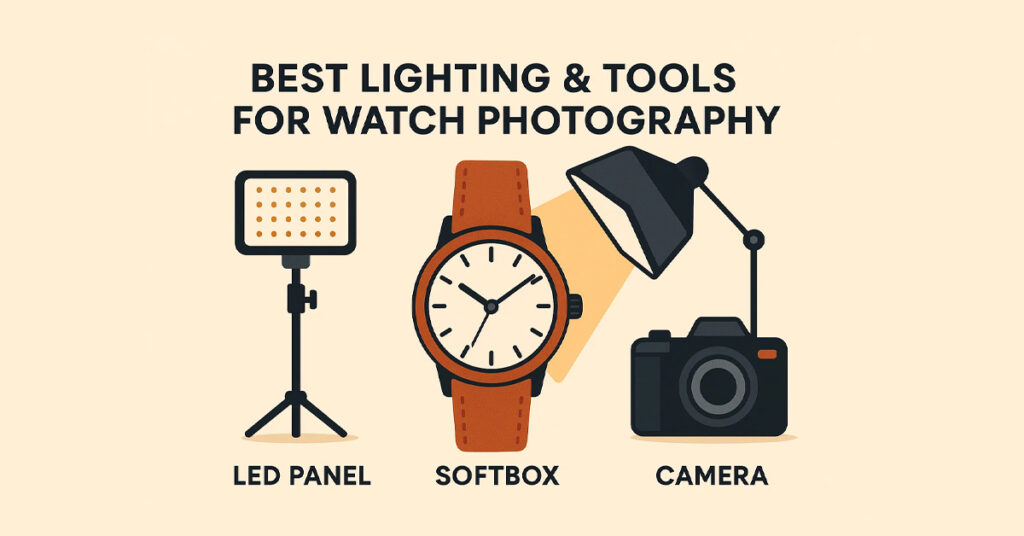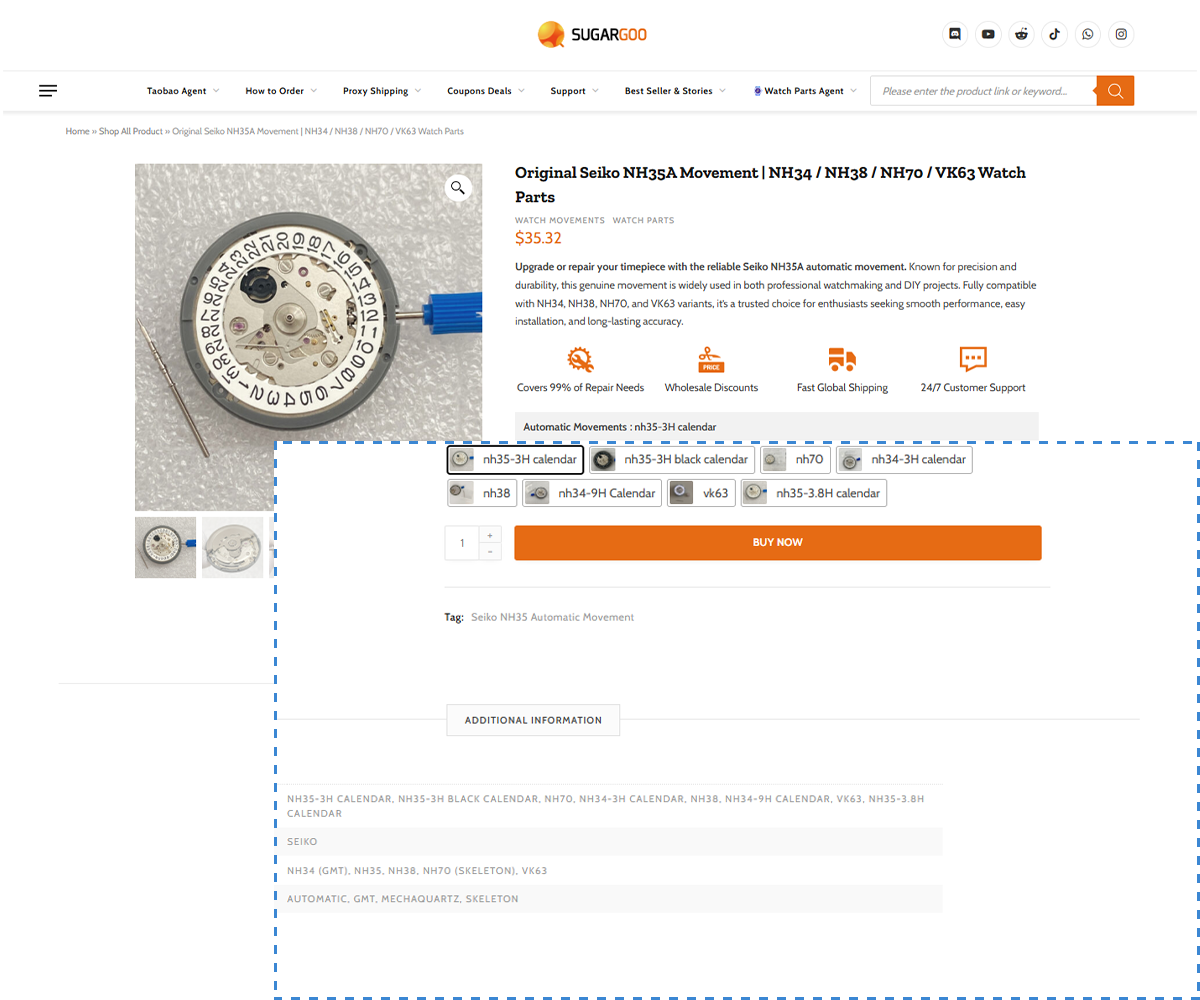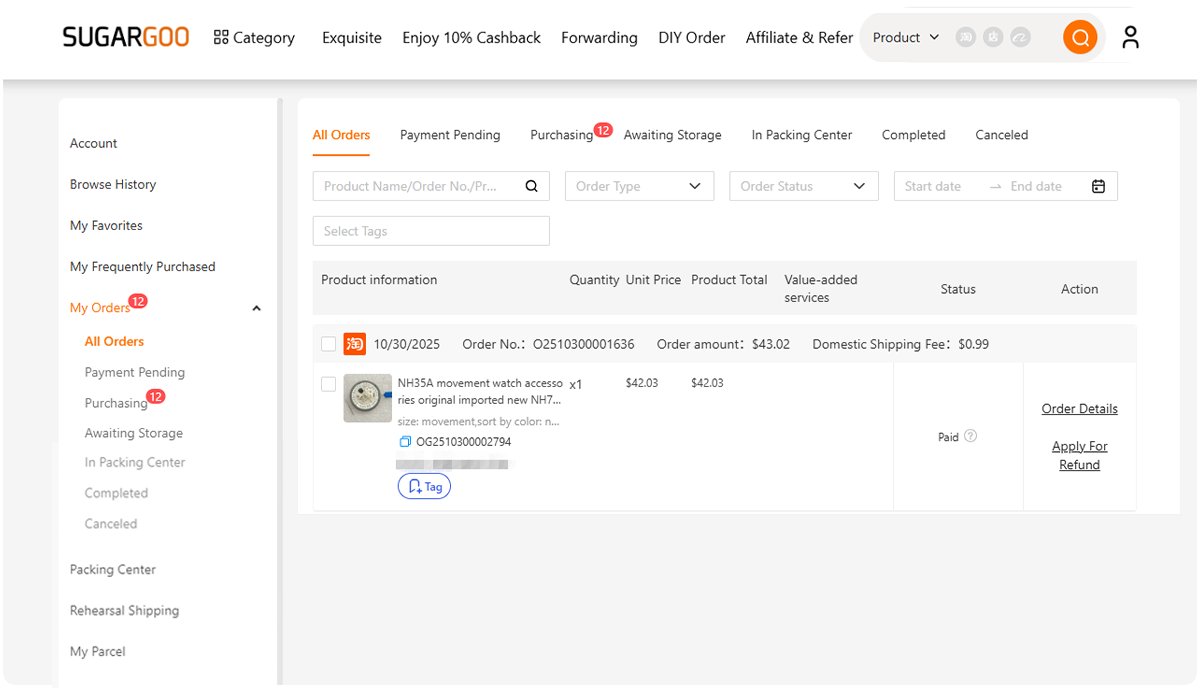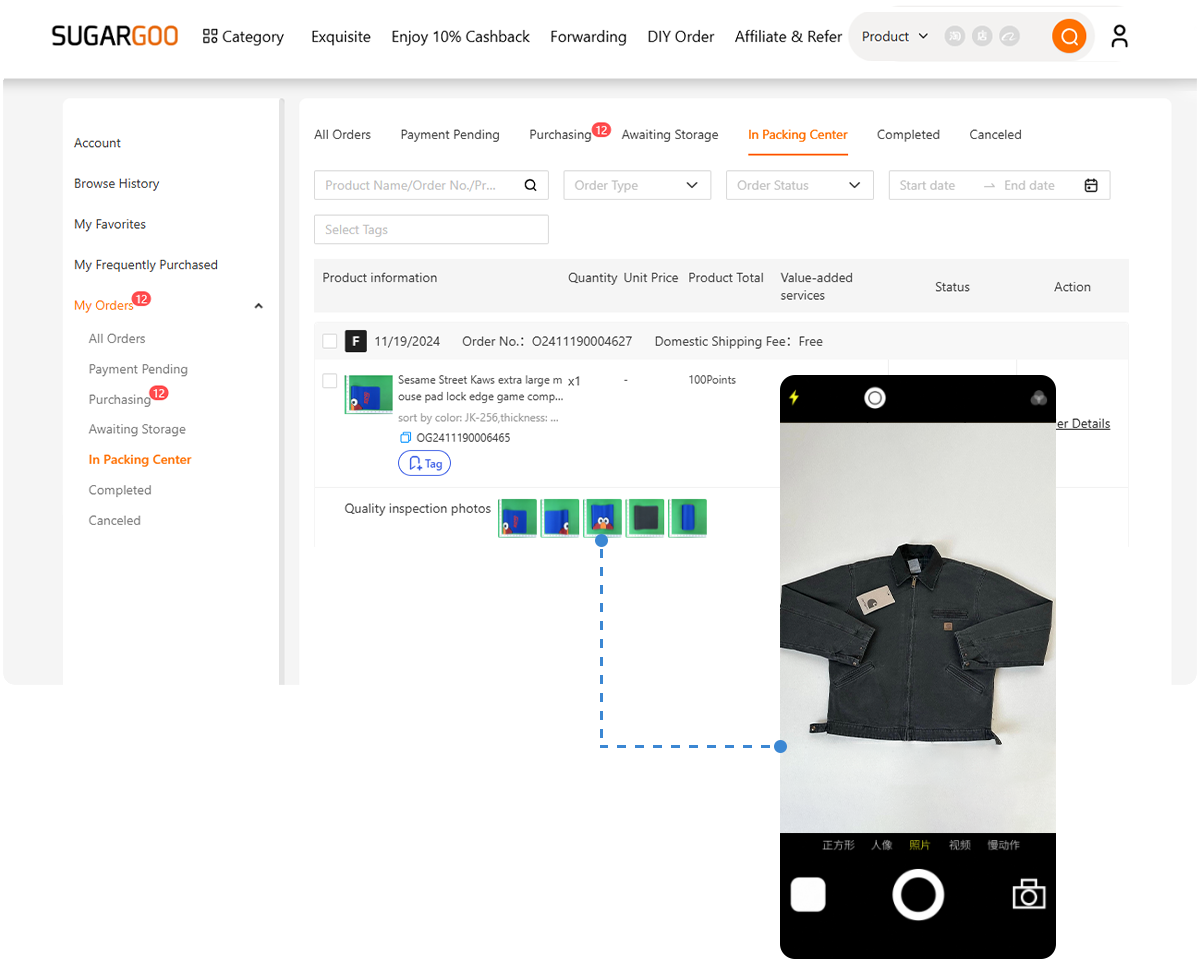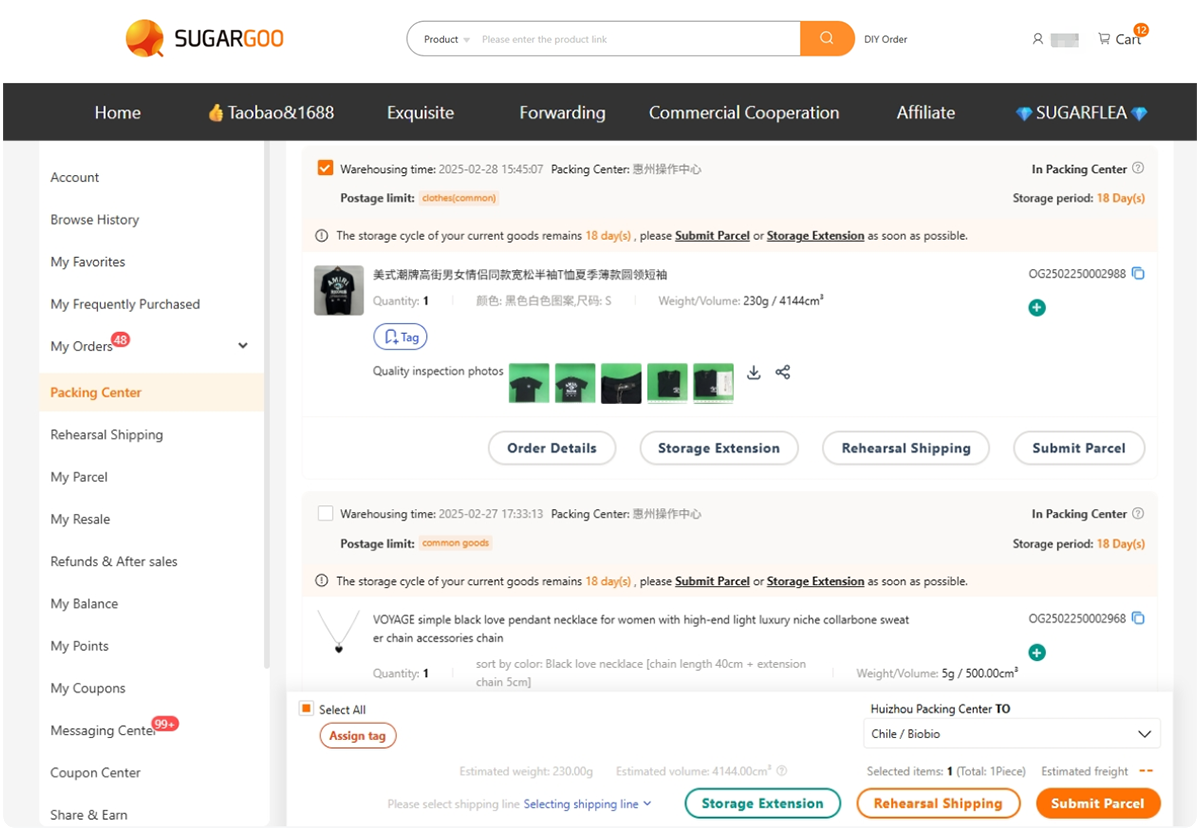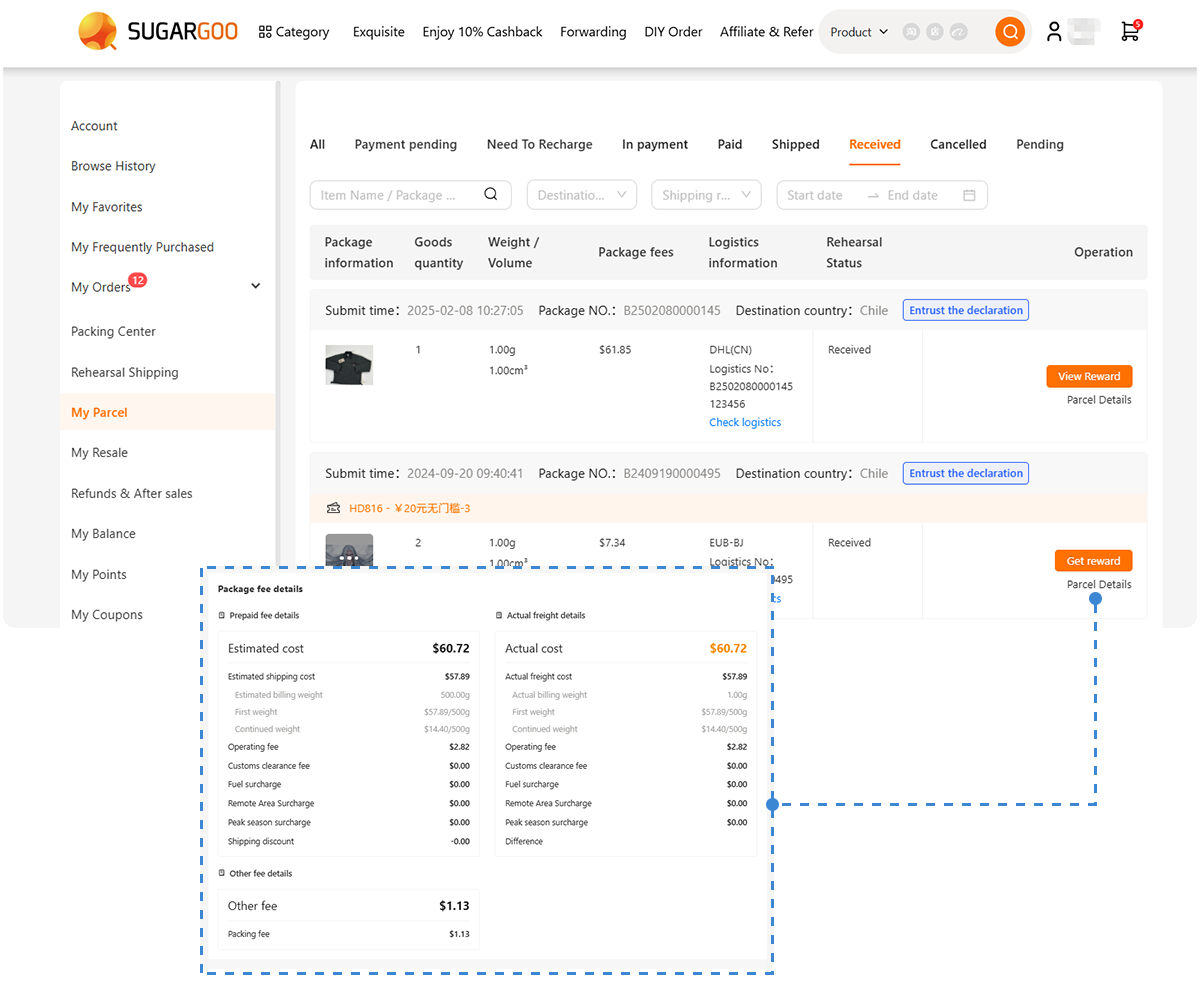Every serious watch enthusiast eventually faces one quiet challenge:
how to capture what you actually see.
The sparkle of polished steel.
The glow of lume under low light.
The perfect sweep of the second hand.
Yet, when you point a camera at your watch — the photos rarely look as magical as they do on your wrist. Reflections, glare, distorted colors… everything that makes your watch beautiful becomes a technical obstacle.
Professional watch photography is one of the hardest kinds of product photography there is. But once you understand light — and the right tools — you can make any Seiko NH35 diver or sapphire-dial ETA 2824 build look like it belongs in a catalog.
Let’s break it down.
Understanding Light: The Soul of Watch Photography
If you learn nothing else, learn this: light defines your watch more than your camera ever will.
Light determines what the viewer feels.
Soft light reveals craftsmanship.
Hard light creates drama.
Reflected light defines the surface language — especially on brushed or polished steel.
When you photograph a watch, you’re not capturing “a shiny thing.” You’re sculpting metal with photons.
Think of light as storytelling:
Diffuse light shows texture and balance.
Directional light emphasizes depth and contrast.
Edge lighting highlights curves, crowns, and crystals.
Once you start seeing reflections as design elements rather than flaws, you move from taking pictures to creating portraits.
The Golden Setup: Simple, Controlled, Repeatable
You don’t need a studio. You need control.
A clean table, a soft light, and a stable camera can outperform $10,000 equipment if you understand your environment.
Start With the Basics:
Light source – diffused LED panel or softbox
Background – matte gray, black, or neutral white (avoid glossy)
Tripod – essential for focus stacking and exposure control
Reflectors – white cards or small mirrors to shape the light
Dust blower – keeps sapphire crystals spotless
Microfiber cloth – polish cases before every shot (Watch Cleaning Cloths)
You can buy compact, high-CRI LED light kits or affordable light tents via taobao agent product photography suppliers, often at a fraction of Western retail prices. Check out Sugargoo for sourcing quality gear.
The key is consistency. The same angle, the same light temperature, and the same shooting distance build a professional look faster than expensive cameras.
Diffused Light: The Watch Photographer’s Best Friend
Direct light is your enemy. It creates harsh reflections that ruin detail.
Instead, use diffused light — light that passes through a soft material like paper, fabric, or acrylic. It wraps around your subject gently, reducing glare and flattening unwanted highlights.
You can DIY your setup:
Tape white printer paper around a lamp.
Use a translucent plastic box as a mini light tent.
Even a white bedsheet can act as a diffuser in a pinch.
The goal? Soften everything.
When shooting polished stainless steel watches or reflective sapphire crystals, diffusion makes or breaks your shot.
Light Direction: Sculpting with Angles
Imagine your watch as a 3D sculpture.
Light from above creates calm, editorial looks.
Light from the side builds volume and shadow.
Light from behind defines the silhouette.
For beginners, start with 45° side lighting — it highlights details while keeping reflections predictable.
Professional setups often use two diffused lights on opposite sides and one backlight to outline the case edges.
This triple setup makes the watch “pop” against the background.
If you want to emphasize the dial texture — grain, sunburst, or enamel — tilt your light so it skims the surface at a shallow angle.
Managing Reflections: The Hardest Skill to Master
Every polished surface reflects everything around it.
That includes your camera, hands, and ceiling.
To control reflections:
Shoot inside an enclosed lightbox (DIY or commercial).
Wear black or neutral colors when shooting.
Place white cards around your setup to control where light bounces.
Use polarizing filters on your lens to reduce crystal glare.
Reflections should frame the watch, not distract from it.
For example: A dark line along a polished bezel isn’t a flaw — it defines the curve. Learn to use those lines artistically.
Macro Work: Revealing the Invisible
Macro photography is where watches come alive.
You start seeing things that your naked eye misses — brushing patterns, lume texture, and even the micro-grain on a custom dial.
Use a dedicated macro lens (50–100mm range) for minimal distortion.
If you’re on a budget, extension tubes on a standard lens can achieve similar effects.
Tripods are non-negotiable here. Even breathing near the setup can blur an image.
If your subject is a movement — say an open Seiko NH36 or ETA 2824 — macro reveals craftsmanship that even the owner rarely sees.
Always clean before you shoot. Dust on a dial at macro scale looks like a crater.
That’s why modders always keep tools like dust blowers and watch repair tools on standby during photography sessions.
Color Temperature: The Subtle Science
Watch photography lives or dies by color temperature.
Too cool, and steel looks dead.
Too warm, and gold looks fake.
Stick between 5200K–5600K for daylight-neutral light.
If you mix lighting types (like LED + window light), your camera’s auto white balance will struggle.
Set it manually, or use a gray card for calibration.
Consistency is what separates hobbyist photos from professional galleries.
If you shoot sapphire crystals or AR coatings, note that tinted reflections may shift hue. Always test before final shooting.
Composing Like a Watchmaker
The best photos don’t just show watches — they express time.
Think of your watch as a landscape:
The dial is the sky.
The hands are roads.
The bezel is the horizon.
Try asymmetry. Place your watch off-center for visual tension.
Add negative space to emphasize minimalism.
Show context — tools, straps, or parts — to tell a story.
For example, lay a custom watch part or leather strap beside your build to imply craftsmanship.
This “lifestyle framing” is the secret behind great brand photography — it blends art and authenticity.
Backgrounds: Let Texture Speak
Backgrounds don’t just support — they define tone.
Leather mats: warmth and craftsmanship
Wood boards: organic, rustic aesthetic
Stone or slate: industrial, technical feel
Black acrylic: luxury and reflection control
Avoid clutter.
Your watch should dominate the frame, but not float in isolation — a hint of environment builds realism.
If you’re photographing modded builds with visible transparent case backs or bezels, subtle textures enhance the mechanical depth.
Capturing Lume: Painting with Darkness
Few shots impress modders more than a perfect lume photo.
The trick?
Charge the lume under a bright light for 30 seconds.
Switch to total darkness.
Use long exposure (5–15 seconds) and a tripod.
Keep ISO low (100–200) to avoid grain.
Don’t just photograph the glow — capture its fade.
That’s where the life of the lume appears, especially on custom dials for NH35 builds.
Editing Workflow: Less is More
Editing isn’t about transforming; it’s about revealing.
Avoid heavy contrast or saturation.
Your goal is to make steel look like steel, lume look like lume.
Basic workflow:
Adjust white balance and exposure first.
Clean dust spots with healing brush.
Subtly sharpen edges.
Reduce reflections, not erase them.
Export in sRGB for web sharing.
Professional editors use Photoshop or Capture One, but even mobile Lightroom can produce great results if lighting is done right.
Tool Checklist: Essentials for Every Watch Photographer
| Category | Tools | Purpose |
|---|---|---|
| Lighting | LED panels, diffusers, reflectors | Shaping and controlling light |
| Support | Tripod, clamps, soft mats | Stability and composition |
| Lens & Camera | Macro lens, polarizing filter | Precision and glare reduction |
| Cleaning | Dust blower, microfiber cloth, gloves | Pre-shot preparation |
| Editing | Lightroom, Capture One, Photoshop | Post-processing refinement |
Every item on this list serves one goal — to make your photo honest.
You can source most photography and maintenance gear via taobao agent marketplaces that specialize in watch accessories and visual setups for collectors.
Practical Scenarios: Different Lighting for Different Builds
Polished Dress Watches
Use side-diffused light and soft white background. Focus on reflections.
Tool Watches or Divers
Go for higher contrast and dark surfaces. Add slight water droplets for texture — it looks stunning on stainless steel bracelets.
Skeleton or Open-Heart Builds
Light from behind to let the movement glow.
Vintage or Patina Watches
Use warm light (4800K) and textured surfaces like leather or canvas to emphasize age. Learn more about maintaining vintage pieces in our cleaning tips for vintage watches.
Every type of watch deserves a different light language — mastering that is what makes a photo unforgettable.
The Unspoken Rule: Clean Before You Shoot
Even if you think your watch is clean, it isn’t.
Before every shot:
Blow dust off with air.
Wipe fingerprints gently with watch cleaning cloths.
Check under light — you’ll always find something new.
The tiniest smudge ruins macro images.
This is why professional modders spend more time cleaning than shooting. Explore more cleaning techniques in our guide to polishing and cleaning watches.
Closing Thoughts: Capturing Time, Not Just Watches
A great watch photo isn’t about megapixels — it’s about respect.
Respect for craftsmanship, materials, and the passage of time.
Photography is how you translate your build’s soul — the NH35 movement ticking beneath sapphire, the brushed steel that caught your reflection this morning.
The light you use is what turns mechanical art into emotional storytelling.
So next time you pick up your camera, remember:
You’re not photographing a watch.
You’re photographing your relationship with time.
And when that shows in your work, your photo doesn’t just impress others. It moves them.
Join the conversation with other enthusiasts in watch modding communities to share your photography tips and showcase your work.
